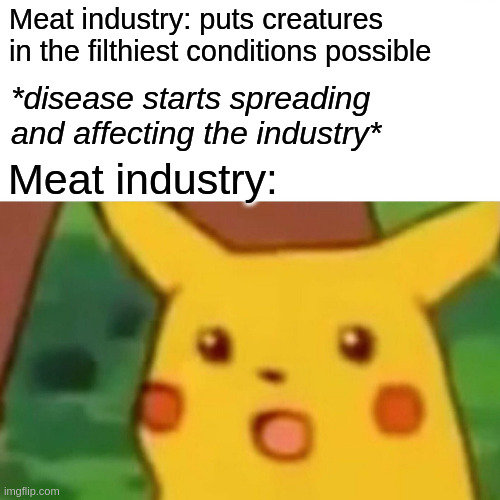this post was submitted on 22 May 2024
1049 points (97.4% liked)
Memes
51206 readers
981 users here now
Rules:
- Be civil and nice.
- Try not to excessively repost, as a rule of thumb, wait at least 2 months to do it if you have to.
founded 6 years ago
MODERATORS
you are viewing a single comment's thread
view the rest of the comments
view the rest of the comments

i agree with everything you've said including your links between causation etc
except the final link you make that its the consumer, i note you said 'partly' a consumer issue, so its not a full attribution - perhaps i'm misinterpreting what % you're attributing.
tbh my take is alot of people would like an option between paying $2 for a garment they know involved exploitation/slavery vs an accessible^1^ independent option that doesn't cost $500/garment.
i don't think people are still choosing the $2 option because they're ok with slavery. but (tragically?) they're more ok with someone else being the slave vs them being the slave - which is what they'd basically be if every piece of clothing cost them $500.
and i think we know the reason there's very little accessible options in between is because the game is rigged, you (HelixDab2) can't realistically enter the game without serious capital behind you (ie. wealth/connections) to reach the volume prices which might give us an option in between - the market isn't fair, its been stitched up long ago, by the same people who don't produce anything and greedily skim off the top.
the venn diagram of independent designers fairly charging $500 for their labor and the greedy skimmers getting fat without producing anything themselves is two separate circles - they're worlds apart
^1^ Quick note on accessibility, there are ofc some scant options between $2-500, but what isn't clear (ie. readily accessible) to the consumer is which of those options isn't just some greedy bastard buying a $2 option and selling it on for $15.
I would have wanted to believe that too, but then you see things like Temu that promise clothing and consumer goods at impossibly low prices, prices that simply aren't possibly without forced labor somewhere, and people eat that shit up. I think that most people have an out of sight, out of mind approach to it, and as long as they can't directly see the exploitation, they'll accept it.
I strongly suspect that this obscurity is by intent.
And, taking this whole thing a bit farther, as a designer that was paying myself $20/hr, I still can't guarantee anything about being free of forced labor, because I have no way of realistically tracking everything in my supply chain. This is why there's no ethical consumption under capitalism, so the best you can do is pick your battles.